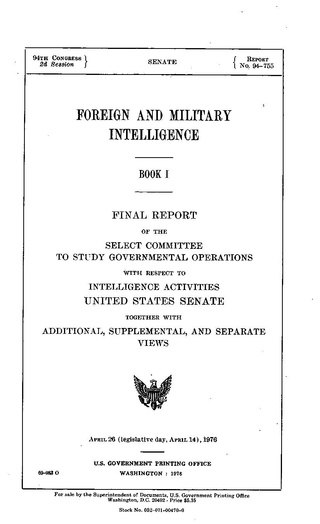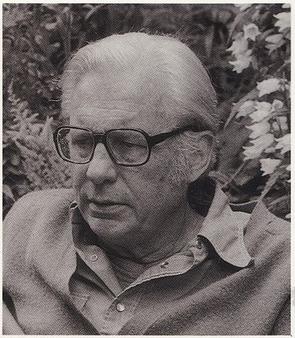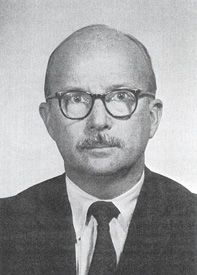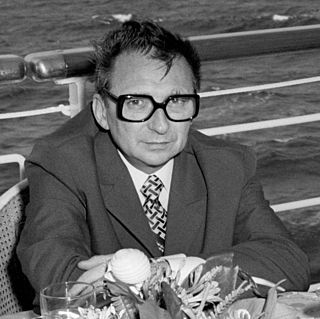Related Research Articles
CIA cryptonyms are code names or code words used by the U.S. Central Intelligence Agency (CIA) to refer to projects, operations, persons, agencies, etc.

Everette Howard Hunt Jr. was an American intelligence officer and author. From 1949 to 1970, Hunt served as an officer in the Central Intelligence Agency (CIA), where he was a central figure in U.S. regime change in Latin America including the 1954 Guatemalan coup d'état and the 1961 Bay of Pigs Invasion in Cuba. Along with G. Gordon Liddy, Frank Sturgis, and others, Hunt was one of the Nixon administration's so-called White House Plumbers, a team of operatives charged with identifying government leaks to outside parties.

The Institute for Policy Studies (IPS) is an American progressive think tank started in 1963 and based in Washington, D.C. It was directed by John Cavanagh from 1998 to 2021. In 2021, Tope Folarin was announced as the new executive director. IPS focuses on US foreign policy, domestic policy, human rights, international economics, and national security.
A covert operation or undercover operation is a military or police operation involving a covert agent or troops acting under an assumed cover to conceal the identity of the party responsible.

Philip Burnett Franklin Agee was a Central Intelligence Agency (CIA) case officer and writer of the 1975 book, Inside the Company: CIA Diary, detailing his experiences in the CIA. Agee joined the CIA in 1957, and over the following decade had postings in Washington, D.C., Ecuador, Uruguay and Mexico. After resigning from the Agency in 1968, he became a leading opponent of CIA practices. A co-founder of the CounterSpy and CovertAction series of periodicals, he died in Cuba in January 2008.

Theodore George "Ted" Shackley, Jr. was an American CIA officer involved in many important and controversial CIA operations during the 1960s and 1970s. He is one of the most decorated CIA officers. Due to his "light hair and mysterious ways", Shackley was known to his colleagues as "the Blond Ghost".

The Church Committee was a US Senate select committee in 1975 that investigated abuses by the Central Intelligence Agency (CIA), National Security Agency (NSA), Federal Bureau of Investigation (FBI), and the Internal Revenue Service (IRS). Chaired by Idaho Senator Frank Church (D-ID), the committee was part of a series of investigations into intelligence abuses in 1975, dubbed the "Year of Intelligence", including its House counterpart, the Pike Committee, and the presidential Rockefeller Commission. The committee's efforts led to the establishment of the permanent US Senate Select Committee on Intelligence.

The Intelligence Identities Protection Act of 1982 is a United States federal law that makes it a federal crime for those with access to classified information, or those who systematically seek to identify and expose covert agents and have reason to believe that it will harm the foreign intelligence activities of the U.S., to intentionally reveal the identity of an agent whom one knows to be in or recently in certain covert roles with a U.S. intelligence agency, unless the United States has publicly acknowledged or revealed the relationship.

The Directorate of Operations (DO), less formally called the Clandestine Service, is a component of the US Central Intelligence Agency. It was known as the Directorate of Plans from 1951 to 1973; as the Directorate of Operations from 1973 to 2005; and as the National Clandestine Service (NCS) from 2005 to 2015.

Miles Axe Copeland Jr. was an American musician, businessman, and Central Intelligence Agency (CIA) founding member best known for his relationship with Egyptian leader Gamal Abdel Nasser and his public commentary on intelligence matters. Copeland participated in numerous covert operations, including the March 1949 Syrian coup d'état and the 1953 Iranian coup d'état.
CovertAction Quarterly was an American journal in publication from 1978 to 2005, focused primarily on watching and reporting global covert operations. CovertAction relaunched in May 2018 as CovertAction Magazine.

Richard Skeffington Welch was a career Central Intelligence Agency officer. He was the Chief of Station (COS) in Athens, Greece, when he was assassinated by the Revolutionary Organization 17 November (17N). His assassination led to the passage of the Intelligence Identities Protection Act, making it a crime to expose or identify officers working in covert roles who had not officially been acknowledged as such by the U.S. government.

The Central Intelligence Agency (CIA), known informally as the Agency, metonymously as Langley and historically as the Company, is a civilian foreign intelligence service of the federal government of the United States tasked with gathering, processing, and analyzing national security information from around the world, primarily through the use of human intelligence (HUMINT) and conducting covert action through its Directorate of Operations. The agency is headquartered in the George Bush Center for Intelligence in Langley, Virginia.
Victor Leo Marchetti Jr. was a special assistant to the Deputy Director of the Central Intelligence Agency who later became a prominent critic of the United States Intelligence Community and the Israel lobby in the United States.
At various times, under its own initiative or in accordance with directives from the President of the United States or the National Security Council staff, the Central Intelligence Agency (CIA) has attempted to influence public opinion both in the United States and abroad.

The CIA and the Cult of Intelligence is a 1974 controversial non-fiction political book written by Victor Marchetti, a former special assistant to the Deputy Director of the Central Intelligence Agency, and John D. Marks, a former officer of the United States Department of State.
The Central Intelligence Agency (CIA), a United States intelligence agency that "provides objective intelligence on foreign countries", also informally referred to as the Agency. The CIA is part of the United States Intelligence Community, is organized into numerus divisions. The divisions include directors, deputy directors, and offices. The CIA board is made up of five distinct entitles called Directorates. The CIA is overseen by the Director of Central Intelligence. Under the Director of Central Intelligence is the Deputy Director of Central Intelligence. Under this the CIA is divided into four directorates. These directorates are as follows:

The KGB and Soviet Disinformation: An Insider's View is a 1983 non-fiction book by Lawrence Martin-Bittman, a former intelligence officer specializing in disinformation for the Czech Intelligence Service and retired professor of disinformation at Boston University. The book is about the KGB's use of disinformation and information warfare during the Soviet Union period.

Use of disinformation as a Soviet tactical weapon started in 1923, when it became a tactic used in the Soviet political warfare called active measures.
References
- ↑ Peake, Hayden B. "The Intelligence Officer's Bookshelf" (Note 18). Studies in Intelligence , Vol. 47, No. 4, July 27, 2006. Archived from the original.
- ↑ Knight, Peter. Conspiracy Theories in American History: An Encyclopedia. ABC-CLIO, 2003. ISBN 978-1576078129. p. 212.
- 1 2 MacKenzie, Angus. Secrets: The CIA's War at Home. University of California Press, 1999. ISBN 978-0520219557. p. 59.
- ↑ Chomsky, Noam (2004). Language and Politics. AK Press. p. 298. ISBN 978-1-902593-82-1.
- ↑ MacKenzie, Angus. Secrets: The CIA’s War at Home. University of California Press, 1999. ISBN 978-0520219557. pp. 64–65.
- ↑ "Editorial". CovertAction Information Bulletin , No. 4, April–May 1979, p. 2. Full issue available.
- ↑ "Advisory Board". Archived 2018-12-11 at the Wayback Machine CounterSpy, Vol. 2, Issue 1, Fall 1974, p. 3. Full issue available Archived 2018-12-11 at the Wayback Machine .
- ↑ Olmsted, Kathryn S. (2000). Challenging the Secret Government: The Post-Watergate Investigations of the CIA and FBI. University of North Carolina Press. p. 151. ISBN 9780807863701.
- ↑ Walker, Jesse. "Agee's Revenge". Reason , July 14, 2005. Archived from the original.
- ↑ Staff report. "Kidnaping in Vienna, Murder in Athens". Time , Vol. 107, No. 1, January 5, 1976, pp. 40-46. Archived from the original.
- ↑ Staff report. "Philip Agee" (Obituary). The Times , January 9, 2008. Archived from the original.
- ↑ Goldman, Jan, ed. (2015). The Central Intelligence Agency: an encyclopedia of covert ops, intelligence gathering, and spies. Santa Barbara, California: ABC-CLIO, an imprint of ABC-CLIO, LLC. p. 391. ISBN 978-1-61069-091-1.